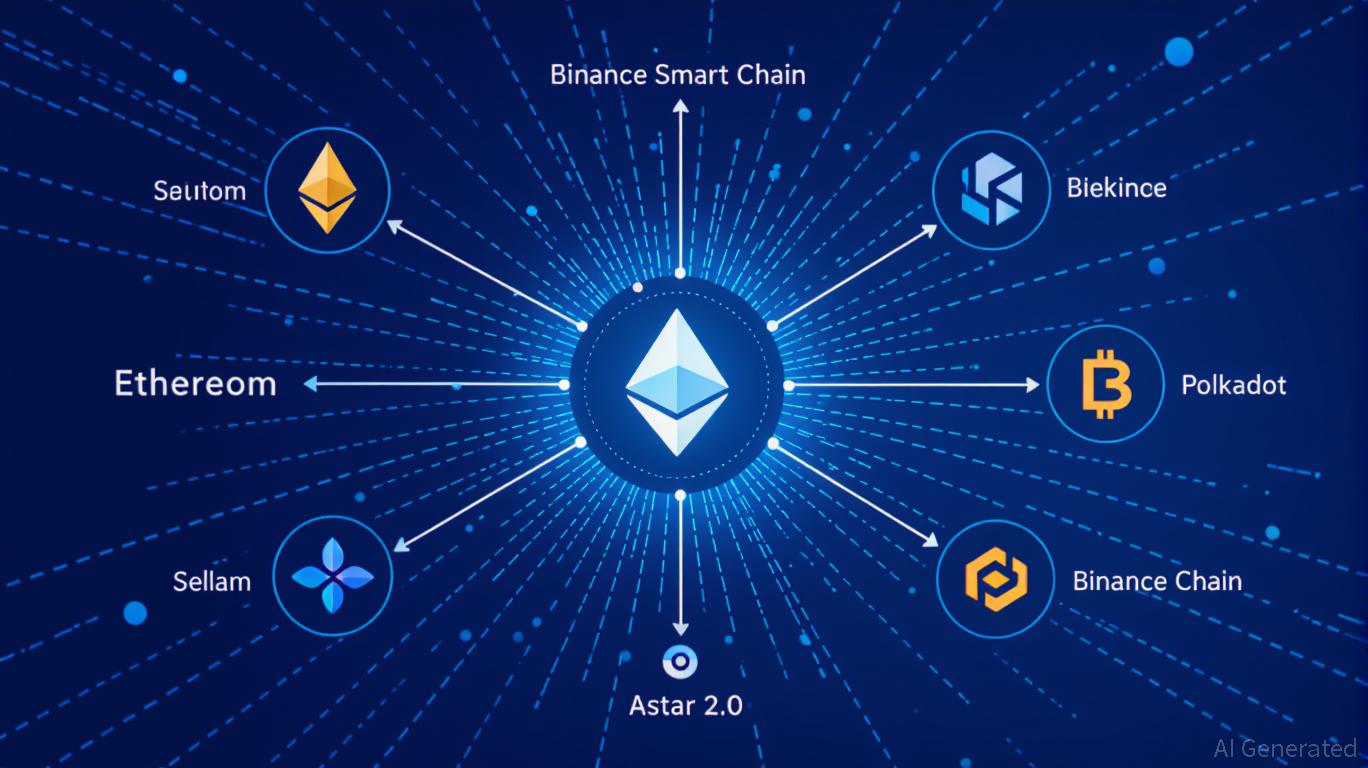Astar 2.0: Leading a New Generation of DeFi and Cross-Chain Advancements
- Astar 2.0 introduces a zkEVM mainnet and cross-chain interoperability, slashing gas fees and enabling 150,000 TPS with 2025 scalability goals. - Strategic partnerships with Mazda, Japan Airlines, and Sony demonstrate blockchain's real-world applications in logistics, loyalty programs, and digital asset tokenization. - Q3 2025 data shows $2.38M DeFi TVL growth and 20% active wallet increase, alongside a $3.16M institutional ASTR token acquisition. - The platform aims to solidify its role as a foundational
Technical Breakthroughs: zkEVM and Cross-Chain Scalability
The launch of a zero-knowledge Ethereum Virtual Machine (zkEVM) mainnet by Astar 2.0 represents a major evolution in DeFi infrastructure. Utilizing zero-knowledge proofs and rollup technology, the platform has significantly reduced gas costs and increased transaction throughput, making Ethereum-based services more accessible to both individual and institutional users
Astar’s capabilities in cross-chain operations further enhance its disruptive edge. The platform’s Astar Link framework incorporates protocols such as
Real-World Applications: From Automotive to Aviation
Astar 2.0’s collaborations with Japanese corporations showcase its ability to deliver real-world blockchain solutions. Mazda, for instance, is utilizing Astar’s hybrid blockchain to streamline supply chain management, using blockchain to monitor parts and minimize inefficiencies
Sony’s alliance with Astar further demonstrates this direction. By issuing digital assets on Astar’s network, Sony is opening up new monetization channels for creators and fans, aligning with the rising interest in NFT-driven platforms
Investor Implications: A Platform Poised for Growth
Astar’s technological progress and strategic moves are already yielding tangible results. In the third quarter of 2025, the platform’s DeFi total value locked (TVL) hit $2.38 million, outperforming the general downturn in the DeFi market

Challenges and the Road Ahead
Although Astar has gained significant traction, it still faces competition from ZK-rollup solutions and established Layer 2 networks. Nevertheless, its emphasis on security, regulatory compliance, and enterprise-level scalability—along with partnerships in sectors like logistics, aviation, and entertainment—gives it a distinctive advantage. Upcoming developments, such as the implementation of Coretime on Polkadot and Async Backing, are set to further decrease latency and enhance resource management,
Conclusion
Astar 2.0’s targeted upgrades and integration into real-world industries are transforming the DeFi and cross-chain environment. By solving issues related to scalability, interoperability, and institutional participation, the platform is not only overcoming technical barriers but also demonstrating blockchain’s practical value in traditional sectors. For investors, Astar stands out as a promising opportunity in a market with significant growth potential.
Disclaimer: The content of this article solely reflects the author's opinion and does not represent the platform in any capacity. This article is not intended to serve as a reference for making investment decisions.
You may also like
Ethereum News Update: Bit Digital's Move to Ethereum Increases Earnings, But Fails to Lift Investor Sentiment as Stock Declines
- Bit Digital's Q3 2025 revenue rose 34% to $30.5M, driven by Ethereum staking and WhiteFiber AI infrastructure growth. - Ethereum holdings surged 400% to 153,547 ETH ($590.5M), while staking revenue jumped 542% to $2.9M year-over-year. - Despite strong financials ($179M cash, $620M liquidity), shares fell 6.35% as investors questioned long-term strategy shifts. - CEO Sam Tabar emphasized Ethereum's "zero downtime" advantage, with staking now accounting for 9.5% of total revenue. - Analysts highlight the d
134 million TRX were transferred out of TRON, worth approximately $40.02 million.
Institutional BTC holdings increased by over $500 million in the past 30 days.
Data: Polymarket predicts a 59% probability that Bitcoin will fall below $90,000 this year.